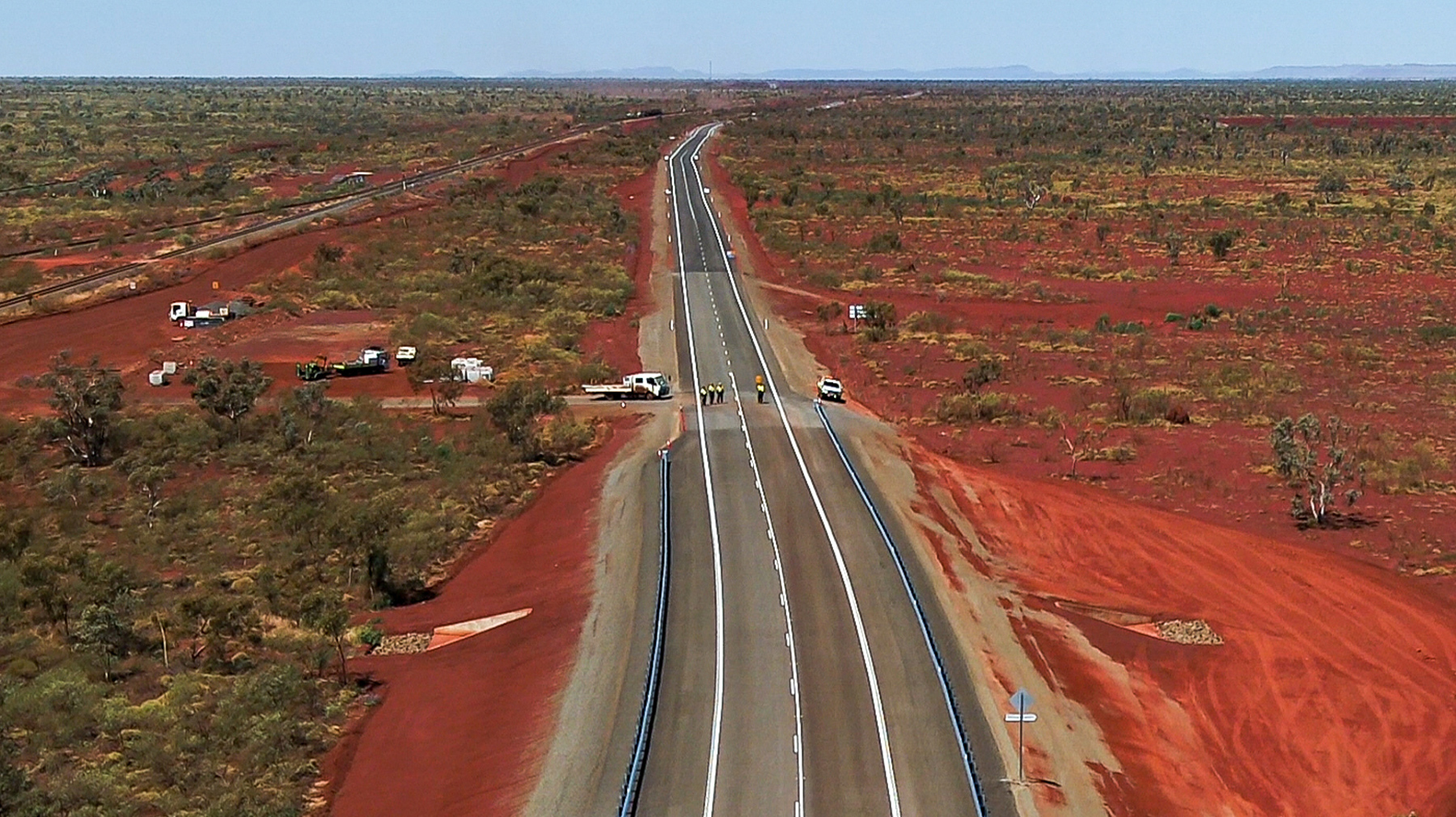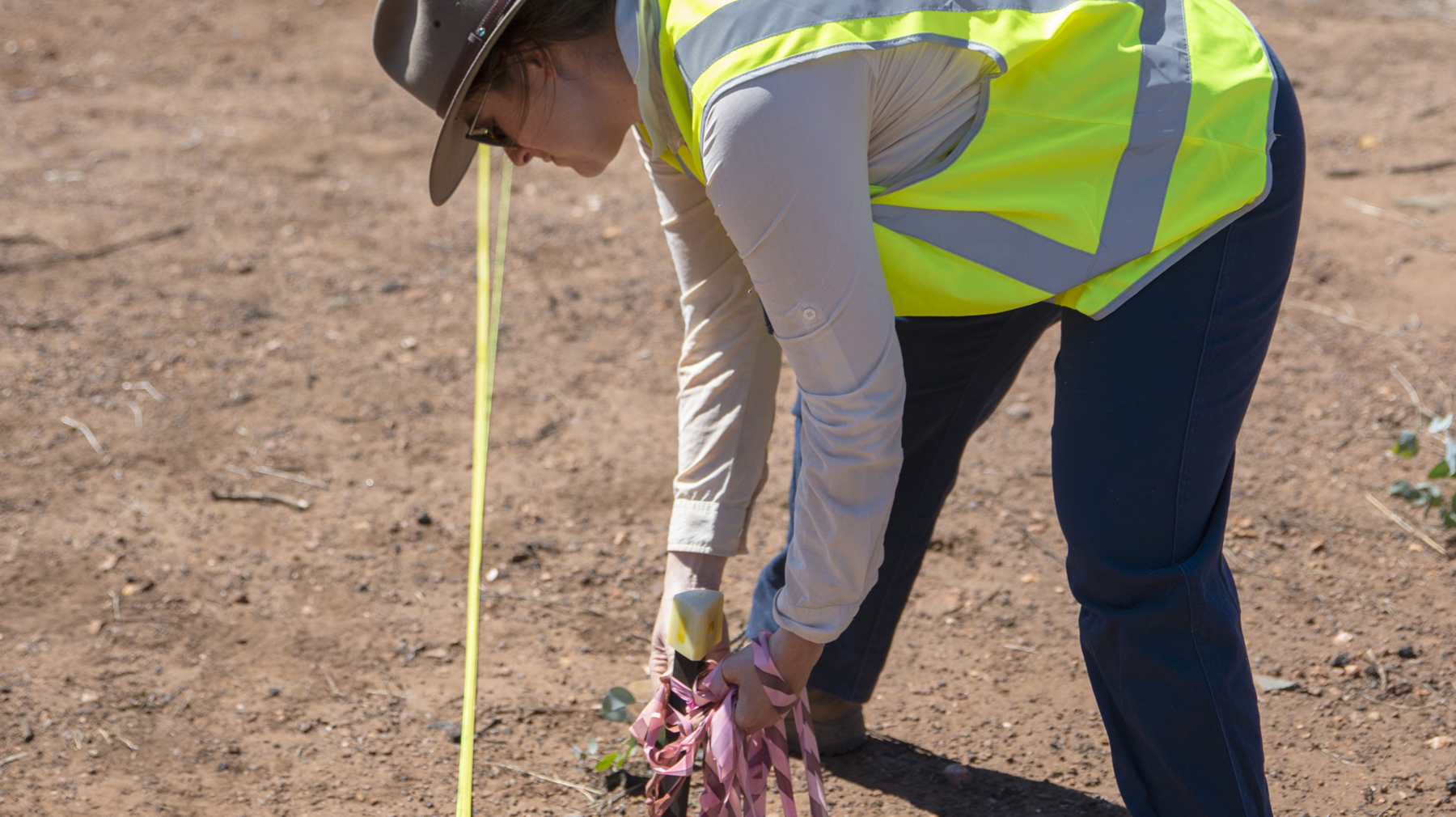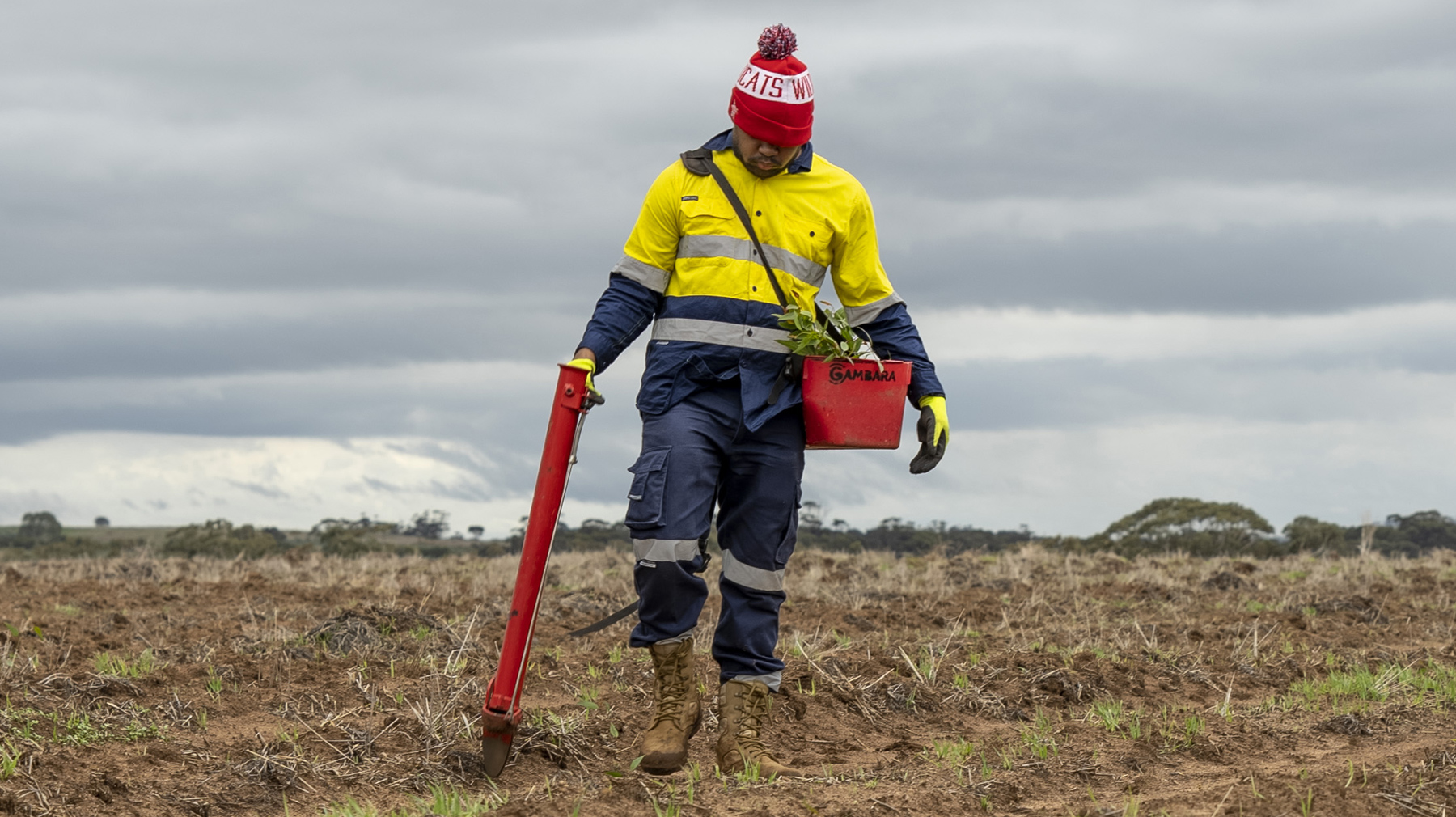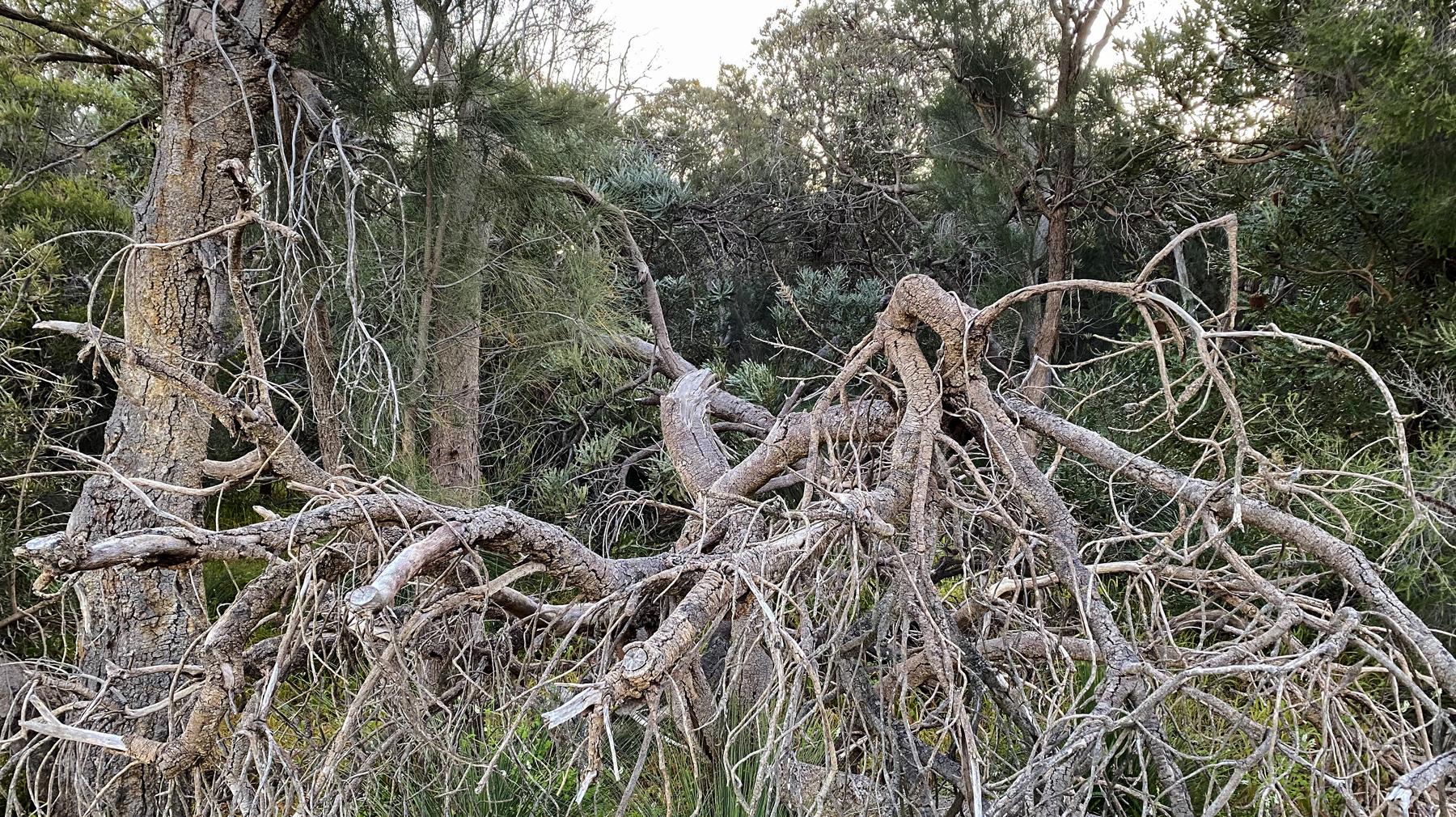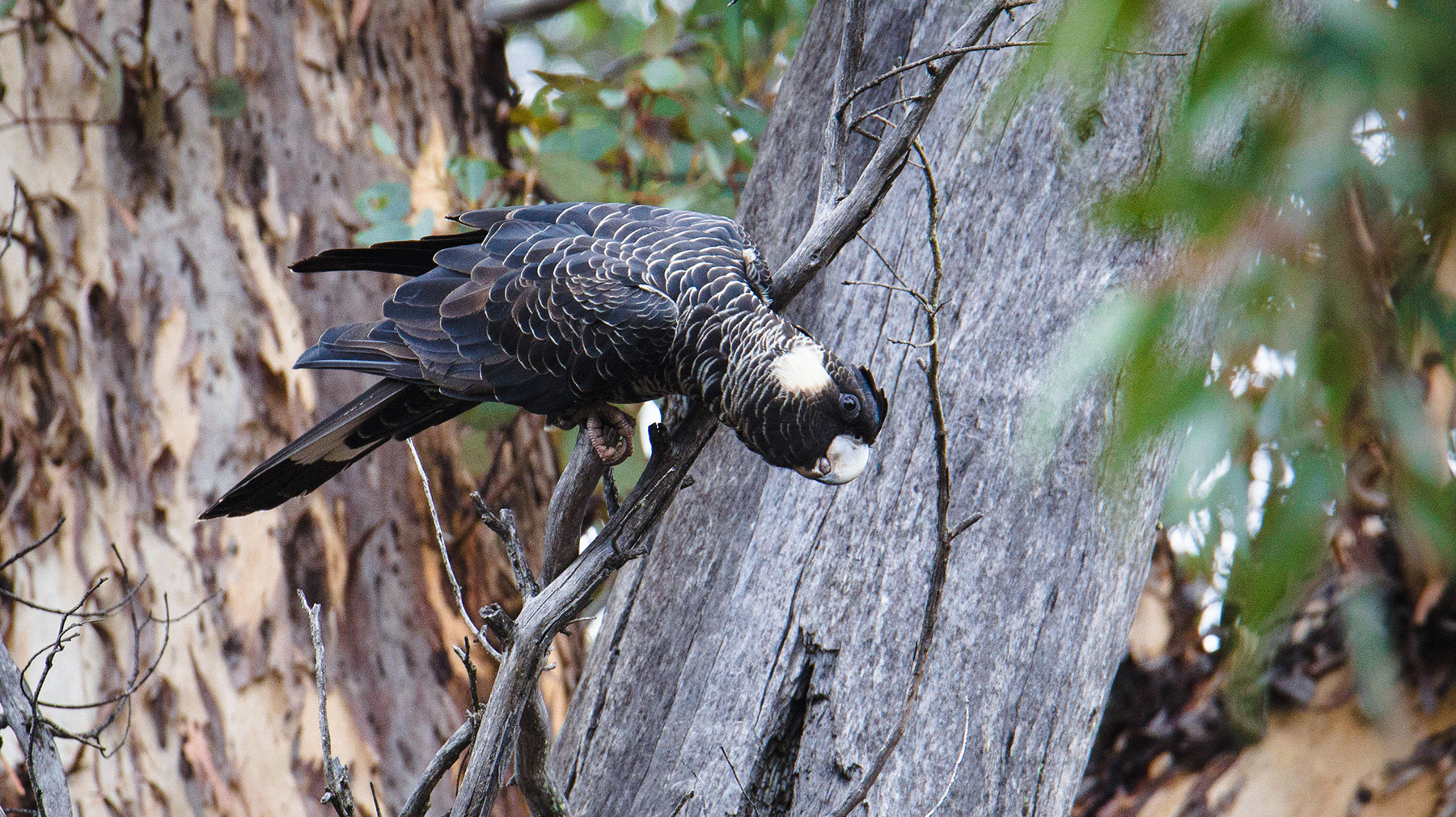Aim
Protect and enhance natural environmental, social and heritage values during all our activities.
Approach
- Recognise the importance of natural environmental, social and heritage values and the broader benefits for the community
- Foster strategic relationships with community and other stakeholders to contribute to the management of environmental values
- Have strong environmental governance of our activities to deliver broad community benefit
- Communicate publicly our environmental policy and our environmental performance.
Target 100%
Percentage of State-wide Clearing Permit audits of compliance completed continues to meet target
Target 90%
Satisfaction with our sustainability practices is within target although decreased from last year
Target 90%
Satisfaction with our performance managing the environment is within target although decreased from last year
Projects and activities planned for next financial year include:
- Obtain approvals (environmental and heritage) for projects with challenging time frames
- Continue implementing the Wheatbelt Revegetation Bank
- Develop processes for the new maintenance delivery model
- Contribute to Net Zero Transition Plan
- Continue the dieback eradication trial
- Improve landscaping outcomes
- Continue development and implementation of eLearning modules
- Update processes to reflect changes to Commonwealth and state processes for environmental and Aboriginal heritage matters
- Participate in co-design workshops for the Aboriginal Cultural Heritage Management Act 2021 (WA).
Sustainability Assessment in Projects and Operations
For our highest value major projects, we have adopted the Infrastructure Sustainability (IS) rating tool, Australia's only comprehensive rating system for evaluating sustainability across design, construction and operation of infrastructure.
All infrastructure projects exceeding $20 million utilise the IS framework as part of project development and evaluation, and all projects valued at more than $100 million are officially registered with the Infrastructure Sustainability Council (ISC) for assessment.
We currently have 18 projects registered with ISC to achieve Planning, Design and As-Built Ratings. Each project is at a different rating stage. We have a corporate commitment that our planning projects must achieve at least a Bronze IS rating, while our construction projects must achieve a minimum Silver IS rating for both the design and as-built phases
Stand-alone public sustainability reports are produced for our projects with sustainability obligations. This year, reports have been submitted and are accessible from our online report for the following projects:
- Mandurah Estuary Bridge Duplication (Planning)
- EastLink WA (Planning)
- Manuwarra Red Dog Highway (Planning)
- Swan River Crossings, Fremantle (Planning)
- Armadale Road to North Lake Road Bridge
- Albany Ring Road
- Bunbury Outer Ring Road
- Great Eastern Highway Bypass Interchanges
- High Street Upgrade
- Leach Highway and Welshpool Road Interchange
- Mitchell Freeway Extension: Hester Avenue to Romeo Road
- Smart Freeways - Mitchell Southbound Hester Avenue to Warwick Road
- Smart Freeways - Mitchell Southbound Reid Highway to Vincent Street
- Tonkin Gap Project and Associated Works
- Thomas Road over Rail
- Coolgardie Esperance Highway (Emu Rocks)
- Stephenson Avenue Extension
Environment and Heritage Management
We use the precautionary principle in our approach to environment and heritage management and aim to avoid and minimise impacts wherever possible.
We ensure that all our activities are initially screened for potential environmental and heritage impacts. Activities considered to have a risk of adverse impacts are subject to further investigations while all others are managed using our standard environmental and heritage practices.
In 2021, we screened 983 activities with more than 33 per cent of these activities requiring further investigations to ensure sound environmental management.
Where impacts were unavoidable, we referred activities with potentially significant impacts to the relevant regulatory authorities for assessment and approval. This is a summary of our applications for approvals over the past three calender years.
| Applications for Approval | 2019 | 2020 | 2021 |
|---|---|---|---|
| Aboriginal Heritage approval sought 1 | 27 | 29 | 28 |
| Aboriginal Heritage approval granted 1 | 18 | 26 | 27 |
| Historic Heritage approval granted 2 | - | - | 5 |
| Project specific clearing permit applications | 14 | 11 | 7 |
| Project specific clearing permits granted | 18 | 7 | 5 |
| Projects assessed using Main Roads state-wide clearing permit | 101 | 118 | 98 |
| Projects referred to the WA Environmental Protection Authority under Part IV of the Environmental Protection Act 1986 | 6 | 5 | 1 |
| Projects approved by the WA Minister for the Environment under Part IV of the Environmental Protection Act 1986 | 1 | 1 | 0 |
| Number of projects referred to the Commonwealth Department of Agriculture, Water and the Environment under the Commonwealth's Environment Protection and Biodiversity Conservation Act 1999 | 6 | 7 | 1 |
| Number of projects approved under the Environment Protection and Biodiversity Conservation Act 1999 | 2 | 3 | 7 |
| NOTE: all approvals granted may include applications made in previous years. 1This includes regulation 10 and section 18 applications under the WA Aboriginal Heritage Regulations 1974 or WA Aboriginal Heritage Act 1972 (respectively) submitted or granted between 1 January and 31 December 2021. 2This includes Government Heritage Property Disposal Process approvals and any other type of formal approval from the Heritage Council of WA. | |||
In 2021, we applied for 28 Aboriginal heritage approvals and five project-specific clearing permits. A total of 98 projects were assessed under our State-wide Clearing Permit (CPS 818) in 2021, with 12 projects referred to the Department of Water and Environmental Regulation in accordance with the permit conditions.
One project was considered to have potentially significant impacts and was referred to the Environmental Protection Authority (EPA) for assessment; however, the EPA concluded that this project did not have potentially significant impacts and made the decision to not assess the works. Three other projects referred to the EPA were still under assessment at the close of 2021. No projects were approved by the Minister for the Environment in 2021.
One project was considered to have potentially significant impacts to Matters of National Environmental Significance and was referred to the Commonwealth Department of Agriculture Water and Environment (DAWE) for assessment which concluded the project did not have potentially significant impacts on Matters of National Environmental Significance and made the decision to not assess the works. Two other projects referred to DAWE were still under assessment at the close of 2021. Seven projects were approved under the Environment Protection and Biodiversity Conservation Act 1999 in 2021.
Clearing Native Vegetation
While we strive to find a balance between achieving road safety objectives and the environment, it is not always possible to avoid the clearing of native vegetation. When this occurs, we offset negative impacts through revegetation, seeding or planting, purchasing land for contribution to the conservation estate or monetary contributions to the State Offset Fund for the acquisition of land and addition to the Conservation Estate.
This table summarises our clearing, revegetation and offset activities over the past three years. Clearing of native vegetation undertaken in 2021 under our Statewide Clearing Permit (CPS 818) is available on our website.
| Clearing, Revegetating and Offsetting | 2019 | 2020 | 2021 |
|---|---|---|---|
| Clearing (ha) | 663 | 210 | 613 |
| Total revegetation* (ha) | 58 | 214 | 96 |
| Offset Revegetation (ha) (a) | 15 | 0 | 0 |
| Land acquisition (ha) (b)
(Value of land acquired ($)) |
334 $1,636,895 |
204 $1,528,091 |
108 $1,214,683 |
| Financial contribution ($) (Area of land to be acquired using the financial contribution (ha)) (c) |
$944,800 (437) |
$629,976 (368) |
$71,519 (32) |
| Total offset (ha) (a+b+c) | 786 | 571 | 140 |
| *Offset bank related revegetation is not included in the Total revegetation figures. (See Wheatbelt Revegetation Bank below.) | |||
During 2021 we cleared 613 hectares of native vegetation for the delivery of 112 projects. We provided offsets in the form of land acquisition and monetary contributions to the Western Australian Environmental Offsets Fund for the purchase and management of a total of 136.08 hectares of native vegetation. We also undertook 102 hectares of revegetation works, 84 hectares of this was not required under a legislative approval and was initiated proactively by us.
Wheatbelt Revegetation Bank
Our Wheatbelt Revegetation Bank initiative is offering a sustainable solution to the often conflicting needs of improving road safety and conserving roadside vegetation. In the Wheatbelt, many road safety upgrades are planned that may involve clearing of roadside vegetation that may contain remnants that are protected under environmental legislation. Approvals for road upgrades often require us to provide 'environmental offsets' to compensate for the loss of this vegetation. This typically involves the purchase and protection of remnant vegetation on freehold land which is becoming increasingly challenging as the availability of land with quality remnant vegetation is limited and declining.
The Wheatbelt Revegetation Bank offers a sustainable approach to providing environmental offsets and addressing the incremental loss of native vegetation. It involves the purchase and revegetation of cleared farmland abutting road reserves or existing areas of high-value remnant vegetation. The revegetation will be managed to ensure it achieves standards as required by the environmental agencies. The program aims to establish, within 10 years, native vegetation meeting the criteria for the Eucalypt Woodlands of the Western Australian Wheatbelt, a threatened ecological community. These revegetated areas will form an offset bank that will simplify and expedite environmental approvals for future road upgrade programs across the Wheatbelt.
During 2021, a total of 80 hectares was revegetated across five locations in the Wheatbelt. None of the revegetation from the Wheatbelt Revegetation Bank had been utilised as an offset for any of our projects. As areas from the bank are used they will be reported in the Clearing, Revegetating and Offsetting table above.
Incidents
We are prepared for the possibility of environmental incidents and have systems and processes ready to respond. An environmental incident is any activity that has the potential to have an adverse environmental impact. The following outlines the significant incidents that have occurred in the past three years. Significant incidents are those incidents that are classified with a moderate, major or catastrophic consequence.
| Significant Incidents (Moderate, Major and Catastrophic) | 2019 | 2020 | 2021 |
|---|---|---|---|
| Incidents caused by Main Roads | 10 | 9 | 10 |
| Incidents caused by third parties | 4 | 4 | 10 |
| Transport Portfolio risk classification process includes insignificant, minor, moderate, major and catastrophic. Insignificant and minor incidents have not been reported here. | |||
There were no catastrophic incidents in 2021. There was one major third party incident relating to a truck rollover in the Pilbara resulting in approximately 80,000 litres of diesel being spilled within the road reserve. An environmental consultant was engaged and a report on the site clean-up will be forwarded to all stakeholders once the remediation and sampling has been completed.
The remaining 19 incidents were classified as moderate with 10 caused by our activities and nine caused by third party activities. These 19 incidents related to 11 occurrences of unauthorised clearing of native vegetation (six Main Roads, five third party), two impact to Aboriginal Heritage (one Main Roads, one third party), two spills (two third party), one impact to Historic Heritage (Main Roads), one introduction/spread of weeds, pests or disease (Main Roads), one non-compliance with approval condition - no environmental impact (Main Roads) and one Other (third party).
Of the 11 incidents of unauthorised clearing, six relate to Main Roads incidents resulting in a total of 0.266 hectares of unauthorised clearing of native vegetation and five third party incidents that resulted in a total of 3.102 hectares of unauthorised clearing of native vegetation.
Incidents were reported to the relevant authorities and there were no penalties or financial sanctions related to any of these incidents. To ensure they are not repeated, we have addressed these procedural failures through training, changes in processes and increases in compliance audits.
Urban Air Quality
Air quality in Perth is generally of a high standard compared with other Australian and international cities. Levels of pollutants have all decreased due to strengthening of national vehicle emission and fuel standards and the management of industrial and domestic air pollution. Our initiatives contributing to the reduction of emissions include:
- Encouraging use of alternative transport through principal shared paths for pedestrians and cyclists
- Optimising traffic management on our network, which minimises emissions due to enhanced traffic flow
- Examining options for an integrated system of roads, rail crossings, mass transit and future technologies
- Supporting uptake of low-emissions technology vehicles, including electric hybrid or other fuelled vehicles that generate less pollutants
- Using strategies to reduce congestion and improve network efficiency, resulting in reduced air pollution from vehicle emissions.
Using the Australian Transport Assessment and Planning Guidelines 2016, we have used data captured internally to estimate emission trends for the six main air pollutants (carbon monoxide, nitrogen dioxide, photochemical oxidants as ozone, sulphur dioxide, lead and particles) from operations and congestion on state and significant local roads in the Perth metropolitan area. A complete breakdown of emissions by type is available in the Additional Environmental and Sustainability Disclosures section of this report.
Net Zero Transition
Following the release of the Western Australian Climate Policy we have been progressing development of a Net Zero Transition Plan which will guide actions in support of the state's aspiration to achieve net zero greenhouse emissions by 2050. The plan will focus on our operations and infrastructure investments and consider impacts from the use of the road network. The Net Zero Transition Plan will replace our existing Carbon Reduction Plan and Target. Total emissions across our facilities over the past year were 24,052 CO2-e, which is significantly below our target of 28,271 CO2-e. The table below shows our greenhouse gas emissions (Scope 1 and 2) over the past three years. Detailed information showing data over the last three years by Scope, Source and Intensity are available in the Additional Environmental and Sustainability Disclosures section of this report.
| Scope 1 and 2 | 2020 | 2021 | 2022 |
|---|---|---|---|
| Greenhouse gas type (t CO2) | 26,257 | 27,313 | 24,052 |
Western Australia's Electric Vehicle Strategy
The State Electric Vehicle Strategy for Western Australia is closely linked to the Western Australian Climate Policy as the electrification of transport is considered pivotal to reducing emissions from transport. Following a pilot trial on one of our projects, we are now including contractual requirements on our major projects to ensure a specific percentage of their light vehicle fleet, or heavy vehicle machinery fleet where available, are plug in hybrid or electric vehicles.
This is all working towards developing a broader construction project fleet policy. We are also committed to increasing the uptake of electric vehicles within our own vehicle fleet and supporting the state government target of 25 per cent, of all new light and small passenger, and small and medium SUV government fleet vehicles, to be electric by 2025-26.
Climate Change Adaptation
We have identified more than 52 kilometres of state roads that have been assessed to warrant more detailed evaluation for the impacts of climate change. The indicative replacement value of this at-risk infrastructure is approximately $446 million. We are currently revisiting our existing assessment of the road network's vulnerability to climate change. This involves a project to pilot an assessment method to help facilitate a complete network-wide vulnerability assessment and enable capacity building for climate adaptation within our organisation
Materials for Road Building
In support of the Waste Avoidance and Resource Recovery Strategy 2030, we incorporate recycled content into the significant materials used for road construction. Crushed recycled concrete (CRC) is a road building material which is under-used and makes up 50 per cent of the state's waste stream. In support of the Waste Authority's Roads to Reuse Program we have continued our commitment to use CRC as subbase under full-depth asphalt on our major projects. We are also aiming to facilitate the broader use of CRC by local governments. A total of 36,298 tonnes of CRC was used over the past 12 months which takes our cumulative total to 117,321 tonnes. We remain committed to increasing our total use of CRC to more than 200,000 tonnes.
Waste tyres are another significant environmental challenge, and this year we have continued our commitment to help facilitate the establishment of a local tyre recycling industry. We mandate the use of Tyre Stewardship Australia endorsed crumbed rubber in resealing works to incentivise local sources using recycled tyres. We have committed to develop and implement alternative crumbed scrap rubber bituminous binders, including binders that may be appealing for local governments to use, and to ensure we are using an amount above our target of over 1,200 tonnes per year. During the last year, we successfully used 1905.20 tonnes of crumbed scrap rubber bituminous binders on our projects and maintenance works.
Other materials that we are seeking to use more of include Fly Ash within concrete mixes, recycled plastic and Food Organics Green Organics as soil conditioner.
Detailed information and data from the past three years is available in the Additional Environmental and Sustainability Disclosures section and covers the following categories:
- Imported road construction material by type
- Imported recycled construction material by type
- Waste material to landfill by type
- Materials recycled by type.




